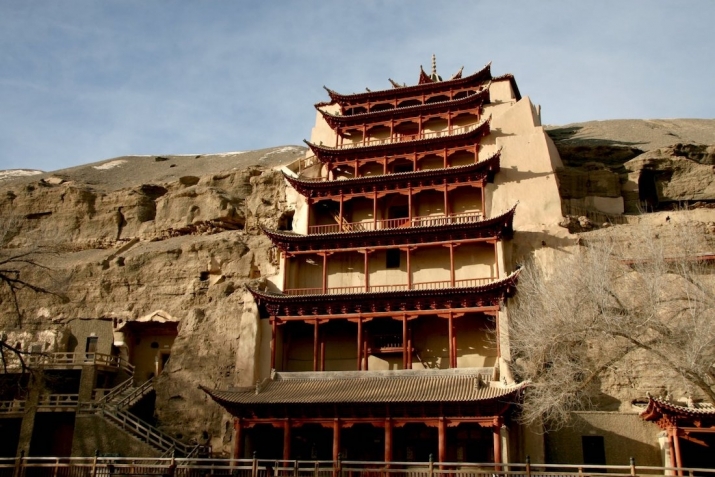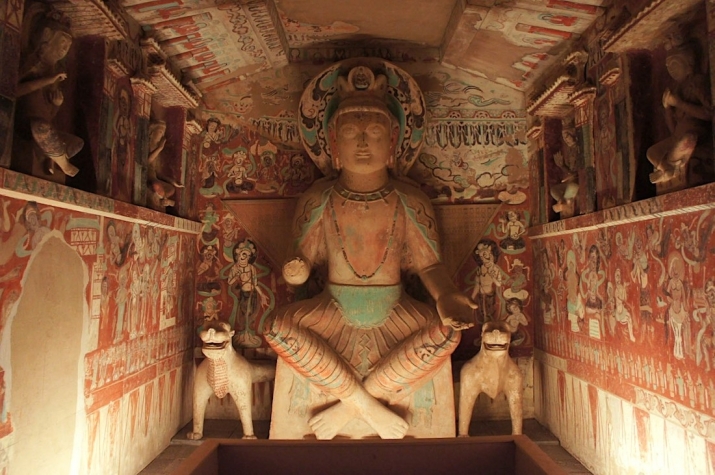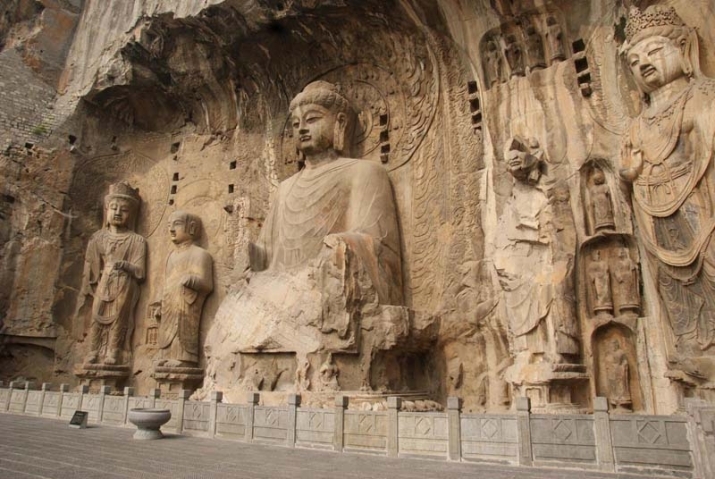NEWS
Dunhuang Airport to Close for Expansion as Popularity of Mogao Caves Takes Off
 Tourist numbers to the Buddhist Mogao Caves are soaring. From wordpress.com
Tourist numbers to the Buddhist Mogao Caves are soaring. From wordpress.comOperations at Dunhuang Airport in China’s northwestern Gansu Province are to be suspended for an expansion project aimed at allowing the transport hub to accommodate the fast-growing influx of tourists to the historic Silk Road city and the nearby Mogao Caves. The airport will be closed from March 15–May 25.
The famed Mogao Caves, an ancient network of Buddhist grottoes and temples hewn into the side of a sandstone cliff in the Gobi Desert, are a repository of some of the finest and oldest works of Buddhist art in China. A UNESCO World Heritage Site since 1987, the Mogao Caves, also known as the Thousand Buddha Grottoes, include some 492 Buddhist temples dating from the 4th to the 14th century, decorated with more than 45,000 square meters of exquisite frescoes and some 2,000 sculptures. The caves were visited by countless travelers, merchants, and Buddhist pilgrims during the period that Dunhuang served as a strategic oasis and major crossroads on the ancient Silk Road and are now more popular than ever.
 Statue of Maitreya Buddha in cave 275 from Northern Liang (397-439), one of the earliest caves. 2. From thehistoryhub.com
Statue of Maitreya Buddha in cave 275 from Northern Liang (397-439), one of the earliest caves. 2. From thehistoryhub.comThe draw of the caves as a tourist attraction has soared in recent years as a result of their growing fame in China and internationally. The Dunhuang Airport authority said on Monday that the 976-million-yuan (US$142 million) expansion project, which was launched in 2016, included revamping the runway and enlarging the airport apron to accommodate more incoming aircraft. When it reopens, the airport will have the capacity to receive 960,000 passengers per year.
Visitors to the ancient Buddhist site reportedly exceeded 8 million domestic and foreign visitors in 2016—a 21.37 per cent increase from the previous year. To protect the historic relics and fragile works of art from the massive increase in public interest, a daily limit on the number of visitors has been in place since 2014 of 6,000 reserved tickets and an additional 12,000 “emergency” tickets during the peak tourist season. Other transportation infrastructure in the region has been improved and expanded in recent years to accommodate the burgeoning number of visitors, including rail links with Beijing, and Yinchuan, the capital of Ningxia Hui Autonomous Region.
The development of Dunhuang is just one aspect of Chinese president Xi Jinping’s ambitious economic and trade development initiative known as “One Belt, One Road”—a plan to resurrect the Silk Road for the 21st century that has also served to renew interest in historic sites along the ancient network of trade routes. The central government’s strategy to improve links between Beijing and its neighbors across Eurasia includes massive investment in rail links, roads, oil pipelines, and other infrastructure. In addition, at least 30 cultural centers are planned in countries along the original Silk Road routes by 2020.
“The ancient silk roads are not just routes of trade, but routes of friendship,” Xi has said. (Yibada)
Taking its name from the lucrative trade in Chinese silk products that was conducted along its length, beginning during the Han dynasty (207 BCE–220 CE), the Silk Road was key to cultural as well as commercial interaction throughout Asia and as far west as the Mediterranean Sea. Trade on the Silk Road was a significant factor in the development of civilizations in China, the Indian subcontinent, Persia, Europe, Africa, and Arabia, and also led to cultural exchanges and the spread of syncretic philosophies and religious thought, including Buddhism, Christianity, and Islam.
 From crystalinks.com
From crystalinks.comSee more
Airport to close for expansion near China's Dunhuang caves (ShanghaiDaily.com)
China Plans to Invest £4 Trillion to Revive Silk Road, Other Forgotten Wonders (Yibada)
Related news from Buddhistdoor Global
Record Tourist Numbers Threaten Ancient Buddhist Art in China’s Mogao Caves
Ancient Hygiene Habits Show Silk Road Facilitated Passage of Disease, as Well as Commerce and Buddhism
Archaeological Find Reveals New Silk Road Route
Related features from Buddhistdoor Global
From the Gobi to the Getty: Buddhist Art from Dunhuang on View in Los Angeles
Dance at Dunhuang: Part One
Dance at Dunhuang: Part Two – The Case for the Feitian
Dance at Dunhuang: Part Three - The Sogdian Whirl
Lee Mei-yin holds the keys to a renaissance in appreciating Dunhuang and Buddhist art














